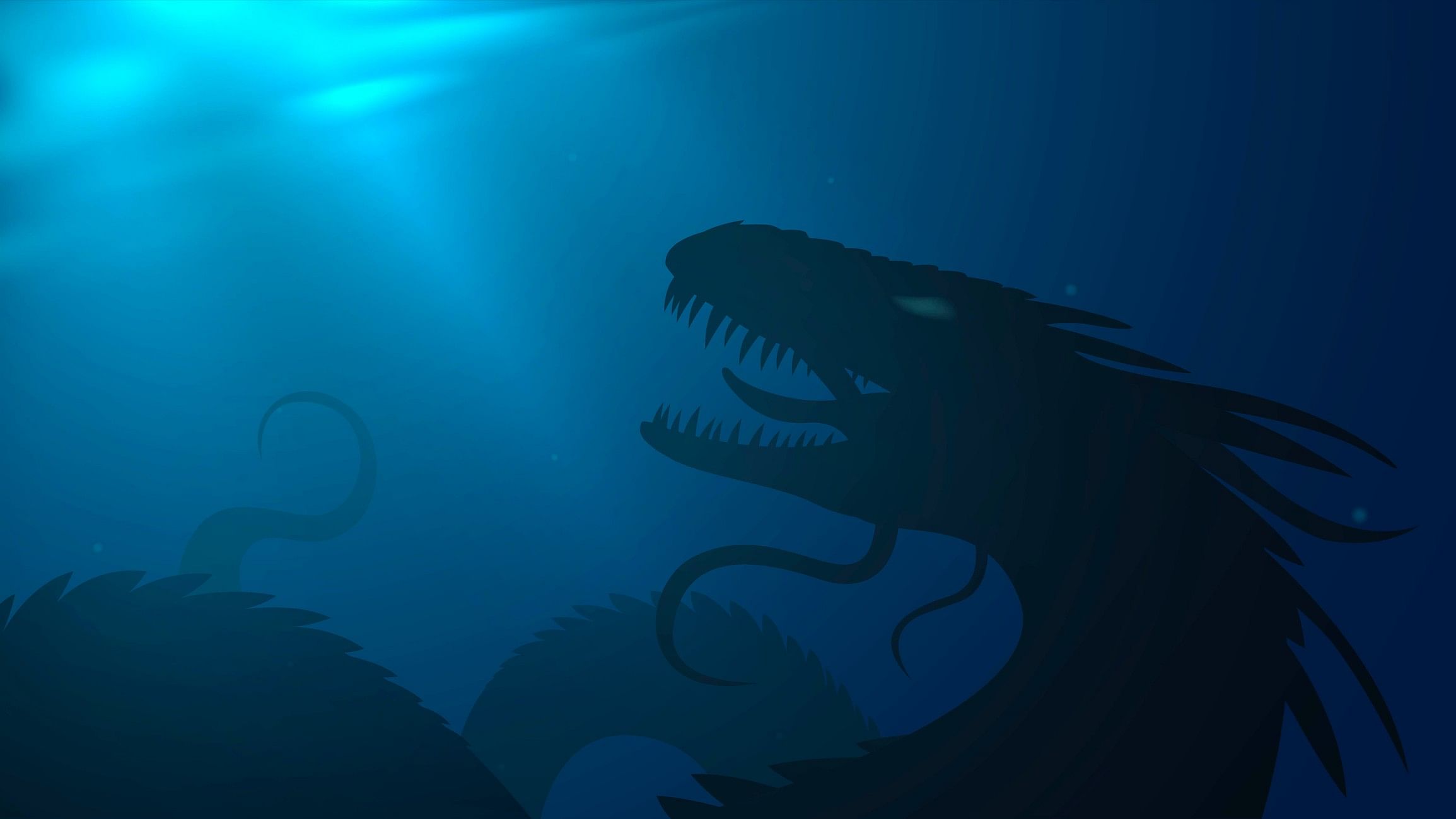
Representative image of ancient sea creature.
Credit: iStock Photo
In Norse mythology, a monstrous sea serpent wrapped itself around the world's waters. Its name was Jormungandr.
The ancient Norse also believed in a place called Valhalla, or heaven. And in North Dakota, there's a small town called Walhalla, a name that reflects the area's Scandinavian heritage.
It was near there that a new kind of mosasaur, a type of giant sea creature, was discovered, scientists announced last week. They named it Jormungandr walhallaensis.
Jormungandr walhallaensis, which lived about 80 million years ago, has been deemed a new species and genus of mosasaur, an ancient lineage of marine reptile predators that dwelled the Earth's waters almost as far back as 100 million years ago.
It was revealed for the first time in a study published in the Bulletin of the American Museum of Natural History.
The paper details the distinct and puzzling features of a fossilized skull and jaw unearthed in North Dakota in 2015 that led researchers to conclude that they had stumbled upon a previously unknown, mysterious creature.
"There a lot of papers published on dinosaurs every year, but not very many papers published on mosasaurs every year because there just aren't very many people in the world working on them," said Michael Caldwell, a leading mosasaur expert and a biological science professor at the University of Alberta in Canada who did not work on the discovery.
Mosasaurs were essentially giant lizards with flippers that allowed them to live in the sea, with some species growing as large as 60 feet.
They went extinct at the same time as the dinosaurs.
Amelia Zietlow, a doctoral student at the Richard Gilder Graduate School at the American Museum of Natural History and the lead author of the new study, said Jormungandr walhallaensis bears a unique mix of physiological traits from what is perhaps the best known mosasaur genus, the school-bus size mosasaurus (depicted, however oversized, in the movie "Jurassic World") and its smaller, more primitive predecessor, the clidastes.
An analysis run by computer software yielded no exact match for the fossil in the mosasaur fossil record, leading Zietlow and her co-authors to conclude that their fossil was not only a new species but also an entirely new genus that sits somewhere between clidastes and mosasaurus in the mosasaur lineage.
However, there is healthy debate over this point.
"Do I necessarily agree that it's a new genus and species?" Caldwell said. "Well, no I don't. But those are sort of the scientific quibbles, right?"
It's more likely, Caldwell said, that the fossil described in the study is simply a new species of the clidastes genus. Under this view, it would take the name Clidastes walhallaensis.
Still, the paper adds "extremely valuable" data for future research to consider as the field develops what is still a fledgling understanding of the evolution of mosasaurs, Caldwell said.
Though Zietlow and her co-authors only had Jormungandr walhallaensis's skull and jaw to analyze, they were able to glean important details about how it lived and died.
Jormungandr walhallaensis probably measured 18 to 24 feet long, Zietlow said.
The shape of its teeth indicate that it preyed on fish and other small creatures when it prowled the Western Interior Seaway, which split North America in half through the Midwestern states during the late Cretaceous Period.
Some of the animal's vertebrae show teeth marks that appear unhealed, Zietlow said, suggesting that it had been attacked by another animal, possibly even another mosasaur, not long before it died.
The fact that the rest of the skeleton was missing when it was discovered suggests that it may have been eaten.
Zietlow hopes her work on Jormungandr walhallaensis will spark interest in mosasaurs, which she called understudied despite collections of their fossils in museums across the continent.
"Of the 4,000 mosasaurs in North America," Zietlow explained, "only about 5% of them have been included in the scientific literature."
This article originally appeared in The New York Times.